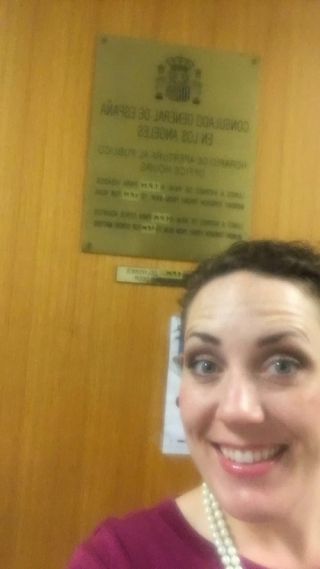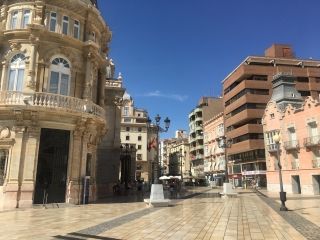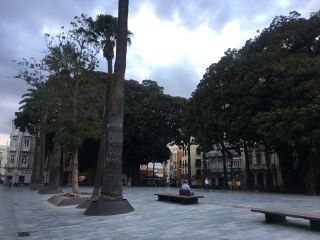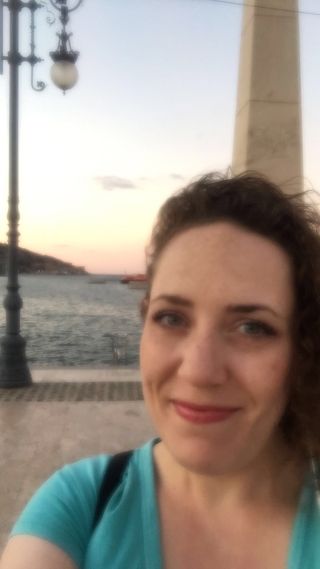Getting to Murcia, Spain
Moving to Spain and teaching English has always been on my bucket list, and I decided that 2018 was “the year.” I started Googling “Jobs teaching English in Spain.” There are many job opportunities for native English teachers, but most of them are for candidates who are already living in Spain, and have a TEFL (Teaching English as a Foreign Language) Certification.
I decided that Step 1 was to get a TEFL Certificate, preferably online.
Which company?
I found a few blogs comparing different companies that offer an online TEFL Certification, and was drawn to CIEE. They seemed to be the most legitimate, to have the most content for the price, were available online, and the class was short -- about 3 months long. I could have gotten a TESOL at a local university instead, but it would have been pricier and taken longer. At the time, the Murcia program was the most affordable option for me, and I was looking for the high level of independence it offered.
When I started, I thought it was an online class that could just be done whenever I had spare time. I was working 40 hours a week, and was hoping to be cast in a live theater production, which would involve evening rehearsals. I thought, “It’ll be fine. I’ll work during the day, go to rehearsal at night, and when I have a few extra minutes, I’ll work on my TEFL class.”
Yeah, that’s not how it works. Online, yes. Flexibility? Yes. However, CIEE’s TEFL course is very structured, with weekly assignments and projects that are due on specific days. They’re not kidding when the website suggests to set aside around 15 hours a week. It’s intense! Definitely worth it, though.
While I was working on the class, I was contacted by the Regional Government of Murcia for their Language and Culture Assistant program (known in Spanish as Auxiliares de Conversación), who wanted to start my contract! I thought they would want to see how I did on my TEFL class first, but no. The TEFL isn’t required by the program, since the Auxiliares aren’t teachers. Auxiliares are there to be experts on the English language, and on the culture of their country. CIEE connected me with the Murcia Government, since the two entities already have a relationship in place. Going through CIEE brought a legitimacy to my resume that I wouldn’t have had if I had just applied to the government on my own.
The TEFL has already helped me in the classroom. For example: it’s very helpful for children, especially at lower levels, to be given instructions like this: English - Native Language - English. This way, they’re more likely to understand instructions and start associating words from their native language with the English counterparts.
So. Much. Paperwork.
The program requires a student visa, and the application required a bunch of documents: the application form, my passport, a passport-style photo (separate from the one actually in the passport), an ID card with my address (proving that I lived in the jurisdiction of the Consulate to which I was applying), my acceptance letter from the Murcia government, a medical certificate with an officially-sanctioned Spanish translation (and a copy of both), an official background check with officially-sanctioned Spanish translation (and a copy of both), an Apostille for the background check with Spanish translation, a signed disclaimer saying that if the Consulate loses my passport they can’t be held responsible except in the case of gross negligence (yikes!), and a money order for the visa application fee.
The Spanish consulate requires that Americans applying for a visa MUST have an appointment. You cannot just walk into the consulate and get it done. Living in Utah, my consulate was in Los Angeles, CA. I received the acceptance email on Memorial Day (May 28th, 2018), and immediately logged onto the consulate website to schedule my appointment. The soonest appointment available was for July 24, 2018, so I immediately took it.
Pulling the documents together was a lot of work! I had let my passport expire, and needed to renew it. For passport photos, I found Costco to be the least expensive. The background check + Apostille is more complicated than you’d think. Americans have two options for doing this: through their state, or through the FBI. Either agency will suffice for the Consulate, but be aware: Background checks solicited through the FBI must be Apostilled by the FBI. I had received my background check through the FBI, and had forgotten about the Apostille until about a week before my appointment. I got online to look at the process, and saw that it would a few weeks. I didn’t have a few weeks, so I paid for another background check through my state government, and had it Apostilled the next day. Paying twice isn’t fun, but that’s what needed to happen.
Process? What process?
When I arrived at the Spanish Consulate (both to apply for and pick up my visa), there were no signs explaining how it worked. It would have been helpful to have a sign saying, “Please have a seat and we will call your name when we are ready.” Unfortunately, I just waited awkwardly until someone behind the desk invited us to have a seat and they would call our names.

However, you don’t have to have an appointment when you pick it up. When I picked up my visa, I had no idea what the process was, so I went in and took a seat. I sat for 15 or 20 minutes while all of the windows were busy. All of a sudden, one of the windows opened up, and a person who’d arrived 60 seconds before that walked right up to the window and picked up her visa.
This is life in Spain.
A group of us had all been waiting for exactly that opportunity, so we hopped up and mobbed the window to show ID and pick up our visas. It was confusing at the time, but it is VERY Spanish. People just walk up to the window and ask for what they want/need -- especially if they don’t see anyone else there. You walk up to a bar and ask for a drink. If you don’t jump on it, and they’re busy, you’ll probably never get to place your order!
Once my visa process was underway, I began physical preparations. I sold my car, got rid of furniture and other belongings, moved out of my apartment into my parents’ house, organized my life as best I could, put things into storage, and started packing. All of this was while I was working on my TEFL.
A few weeks later, I bought my plane ticket. That’s when it got real.
Travel: Both fun and annoying
I got on my plane at the SLC airport at 11:15pm, bound for JFK, and then Boston. My friends packed my suitcase to within a couple of pounds of the limit, and I had my carry-on for everything else. Life was good until I checked in for my flight to London.
I’d already paid $80 to check one bag, and was unprepared for them to tell me that my carry-on was too heavy and would need to be checked. I had two choices: either pay $90 for them to check it, or pay $15 per extra kilo. The $90 ended up being less expensive, so I took that. I was not amused. Be aware that, if you are moving to a foreign country, there are weight limits for both your carry-on and your checked bag.
I landed in Alicante, Spain on Monday, September 17. A good friend of mine picked me up at the airport and drove me to Cartagena, where I checked into my Airbnb and started setting up my new life. I love it here, and am so glad I made this decision!



